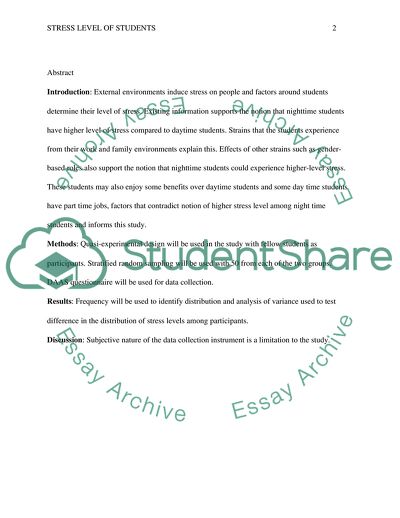Cite this document
(Stress/Anxiety Levels of Night And Day Time College Students Research Proposal Example | Topics and Well Written Essays - 2250 words, n.d.)
Stress/Anxiety Levels of Night And Day Time College Students Research Proposal Example | Topics and Well Written Essays - 2250 words. https://studentshare.org/social-science/1814583-stressanxiety-levels-of-night-and-daytime-college-students
Stress/Anxiety Levels of Night And Day Time College Students Research Proposal Example | Topics and Well Written Essays - 2250 words. https://studentshare.org/social-science/1814583-stressanxiety-levels-of-night-and-daytime-college-students
(Stress/Anxiety Levels of Night And Day Time College Students Research Proposal Example | Topics and Well Written Essays - 2250 Words)
Stress/Anxiety Levels of Night And Day Time College Students Research Proposal Example | Topics and Well Written Essays - 2250 Words. https://studentshare.org/social-science/1814583-stressanxiety-levels-of-night-and-daytime-college-students.
Stress/Anxiety Levels of Night And Day Time College Students Research Proposal Example | Topics and Well Written Essays - 2250 Words. https://studentshare.org/social-science/1814583-stressanxiety-levels-of-night-and-daytime-college-students.
“Stress/Anxiety Levels of Night And Day Time College Students Research Proposal Example | Topics and Well Written Essays - 2250 Words”. https://studentshare.org/social-science/1814583-stressanxiety-levels-of-night-and-daytime-college-students.


